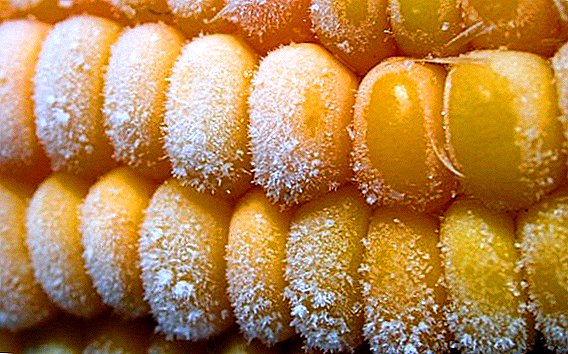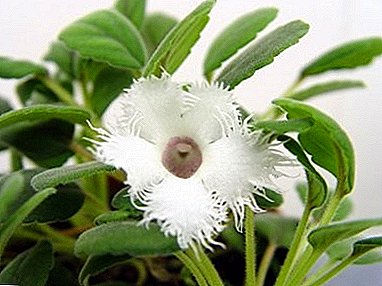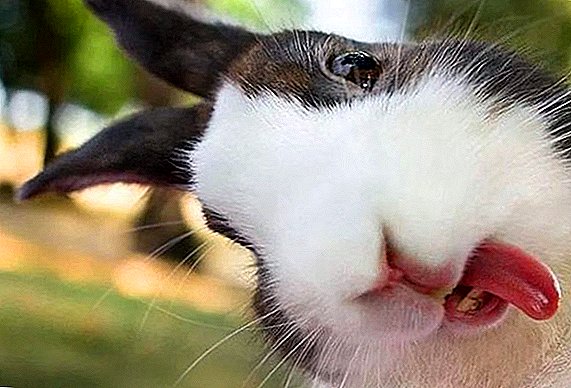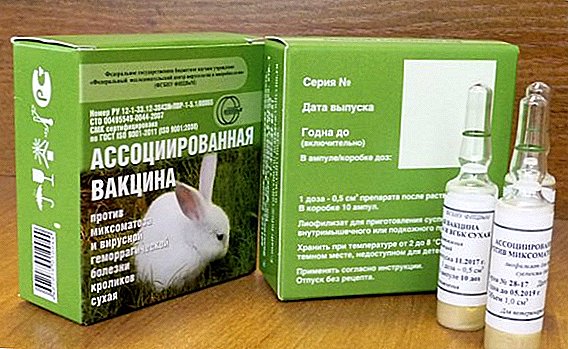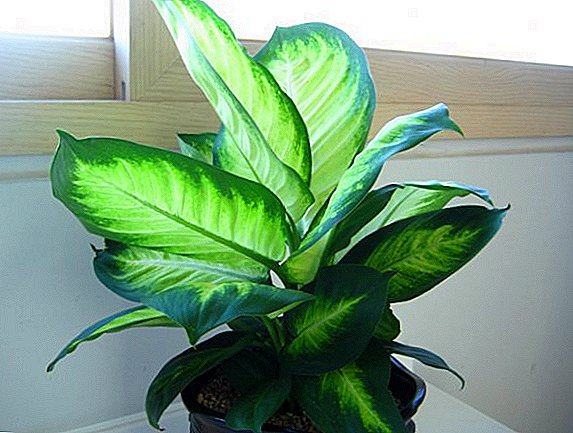 It would seem that onions are a vegetable with a pungent, specific smell, and therefore should not attract pests. But pests of onions - a very common problem for the gardener, and the fight against them is not so simple. Often insects that damage onions eat the bitter inner part of the culture, and it is not always possible to immediately notice them. Due to such "raids" you can lose the entire crop. Fruits damaged by insects are exposed to soil microorganisms and rot. Consider the main and most common pests of bulb onions and determine what methods it is better to deal with them in order to preserve your crop as much as possible.
It would seem that onions are a vegetable with a pungent, specific smell, and therefore should not attract pests. But pests of onions - a very common problem for the gardener, and the fight against them is not so simple. Often insects that damage onions eat the bitter inner part of the culture, and it is not always possible to immediately notice them. Due to such "raids" you can lose the entire crop. Fruits damaged by insects are exposed to soil microorganisms and rot. Consider the main and most common pests of bulb onions and determine what methods it is better to deal with them in order to preserve your crop as much as possible.
Onion fly

 Onion fly is a dangerous pest of onions. It causes significant damage in the years of mass flight at the beginning of development and the period of onion growth. The culture sown with seeds for planting is particularly hard hit, because the larvae in dense stalks creep from the affected plant to the healthy one. If onions are grown from seed and thinning is not necessary, the risk of infection is minimal.
Onion fly is a dangerous pest of onions. It causes significant damage in the years of mass flight at the beginning of development and the period of onion growth. The culture sown with seeds for planting is particularly hard hit, because the larvae in dense stalks creep from the affected plant to the healthy one. If onions are grown from seed and thinning is not necessary, the risk of infection is minimal.
Onions infected with stem nematode or cervical rot are particularly susceptible to attack by larvae of onion and sprout flies. Usually in the middle and north-western strip, under favorable weather conditions, it gives two generations each, and in the territories of the southern regions it has three times. Main signs of damage the plants wither in groups on the phases of the cotyledon and the first leaf: the larvae appear in the bulb itself, and the larvae themselves live in the leaves and bases of the cotyledon. A more adult plant damages the neck of the bulb and the bulb itself, which causes the culture to wither and rot, and then its death.
Regardless of where exactly the fly took root, the bow still dies if the growth point is damaged by even one or two larvae. Description. The adult fly has a light gray color and a body length of 6-8 mm. Wings with a yellowish tinge, legs black. The male has a dark strip located along the abdomen, and a number of setae on the back tibia.
Eggs are elongated, white, 1.2 mm. Off white larvae, worm-like; back and belly rounded, narrowing at the front end, body up to 10 mm long; hooked jaws. On the back segment are two dark round plates with holes for breathing. Pupae of a fly are in a brown-yellow pseudocon.
The initial spring invasion occurs during the lilac flowering period. Reproduction occurs due to additional nectar feeding during the week.
Females lay eggs under clumps of soil or between leaves of onions for 5-20 pieces. The egg laying period can last up to 1.5 months. The newly-formed larvae gnaw through the leaf neck and infiltrate into the pulp of the bulb, devouring its cavity, and then are able to migrate to other bulbs. Pupation of the larvae occurs in two weeks next to the damaged onion in the ground.
How to fight with onion pests in the form of flies:
- drug "flyer" - 50 g per 10 square meters. m (when planting onions brought to the surface of the soil);

- "Medvetoks" - 30 g per 10 sq. M (when planting is applied to the surface of the soil, which must be pierced);
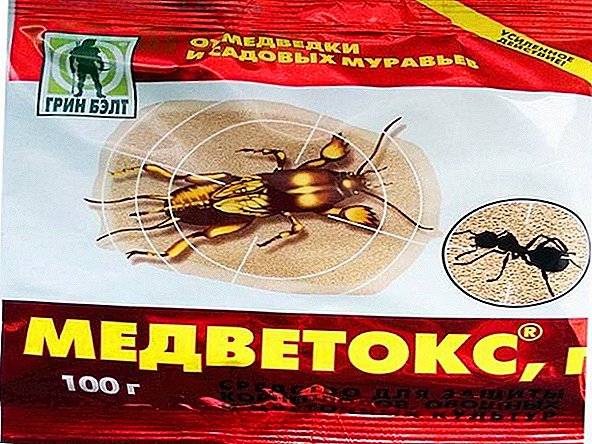
- "Muravin" - 30 g per 10 sq. M (introduction to the beds after sowing);
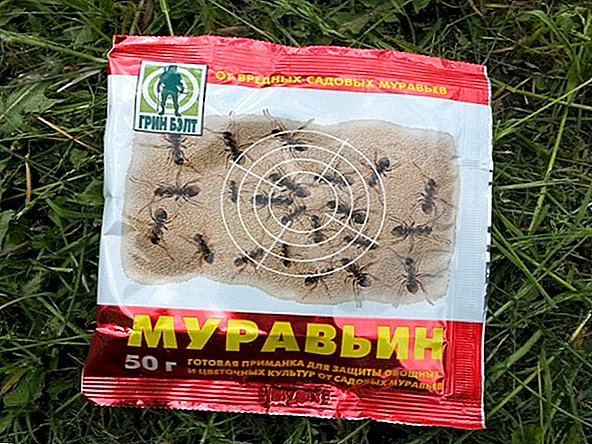
- "Zemoin" - 30 g per 10 square meters. m (after landing, apply on the soil and plow it);
- Tabazol or tobacco dust - 3 g per 1 square. m (pollination produced during the growing season).
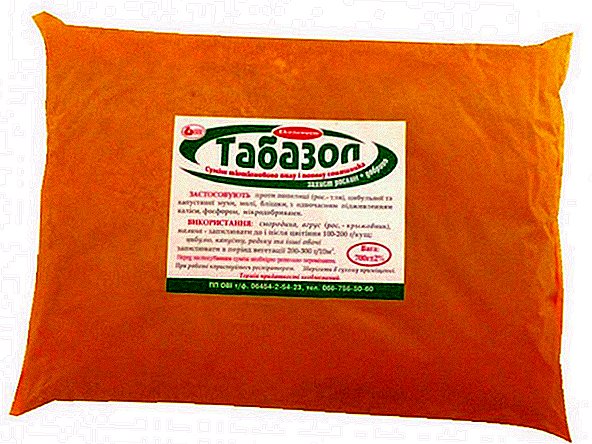
Did you know? Researches of scientists proved that substances that are in the composition of onions and are capable of causing aroma, taste and tearing from its processing, have a negative effect on cancer cells.
Onion moth


Moth description. The butterfly is small in size with front brown wings, the caterpillar is green-yellowish and covered with small short villi. Butterflies, like pupae, carry wintering on the remnants of the bow, in barns, hotbeds. Egg laying occurs in June on the back of a leaf, bulb or flowery arrow.
Harm. After seven days, the larvae begin to ripen, which eats away the pulp of the leaves, and the peel outside remains intact. The caterpillar penetrates inside the bulb or in the neck and can even damage the inflorescences. Pupation of the caterpillars takes place on the leaves of the onion in the first period of June: in the soil, on weeds, plant remains. Two weeks later, butterflies are formed. The caterpillar is capable of inflicting damage to the bow throughout the entire growth period, as over the summer it can produce two or even three generations.
Control measures:
- insecticide "Spark" - 1 liter of solution per 10 square meters. m onion landings (during the flight of butterflies, the initial stage of the appearance of caterpillars);
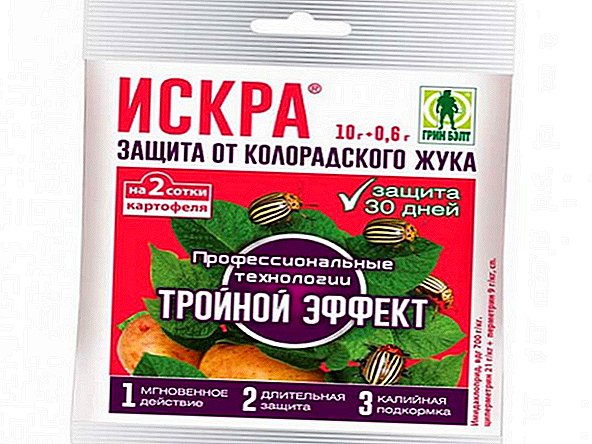
- "Summer Resident" and "Metaphos" - drugs that are well proven; apply following instructions.
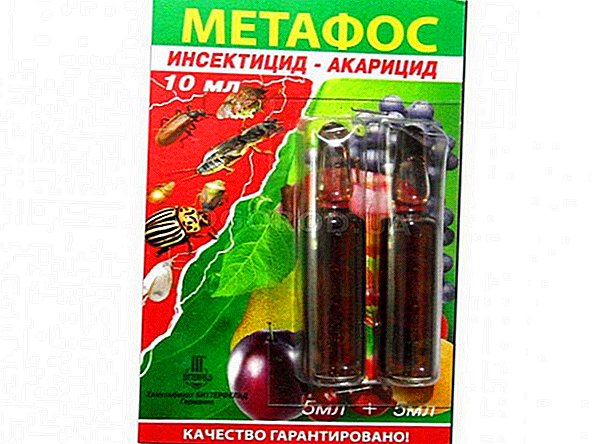
- an infusion of ash - pour 300 g of ashes with boiling water, defend, strain, add 40 g of liquid soap;
- garlic infusion - skip a large amount of garlic through a meat grinder, at the rate of 1: 1 add water. Insist in a warm place for at least a week in a tightly closed container. This infusion is called uterine and can be stored for a very long time. To process with solution: 70 g of infusion on a bucket of water;
- tobacco infusion - 200 g of tobacco raw materials + 1 tablespoon of soap, pour hot boiled water. After it cools, strain through cheesecloth and process onions, especially the soil around it, at the rate of 1 liter per square meter;
- An infusion based on red capsicum - 1 kg of pepper, cut in half, boil in a saucepan with 10 liters of water, after cooling, drain. Processing is carried out at the rate of 130 g of concentrate per bucket of water + 40 g of soap. The concentrate itself should be bottled and stored in a cool, dark place.
Onion hover (kornek)

 Hoverfly is an infrequent guest-pest, but no less harmful than a fly. Usually appears on the bow and harms in the second half of the growing season.
Hoverfly is an infrequent guest-pest, but no less harmful than a fly. Usually appears on the bow and harms in the second half of the growing season.
Damage they are manifested by a lag in growth and yellowing of the leaves, and then by their withering. The bulb becomes soft and gets an unpleasant peculiar smell. If a group of root roots has attacked one onion, then it turns into a black rotten mass.
Description. Chunky flies are medium in size. The female (up to 7 mm) is slightly larger than the male (up to 6 mm). In female zhurchalki, the abdomen is flat, while in males the apex is slightly swollen. The body is bronze-green, and the back is with two light gray stripes. Black mustache. The belly is blue, green. Paws brown-black or just black. The eggs of the female are laid on the already weakened plants, which may be damaged by other pests. Laying is done in small groups, one female brings up to 100 eggs. Control measures same as with onion fly.
Did you know? The composition of natural sugar in onions is much higher than in pear and apple. In one bulb is up to 6% sugar. Corrosive substances evaporate when fried, and onions become sweet.
Onion (tobacco) thrips

 Onions - a favorite delicacy of tobacco thrips. This pest causes damage to both the bulb and the leaves. For the period of wintering lurks in the dry scales of onion and reduces the quality of the vegetable.
Onions - a favorite delicacy of tobacco thrips. This pest causes damage to both the bulb and the leaves. For the period of wintering lurks in the dry scales of onion and reduces the quality of the vegetable.
Damages the fleshy scales, which become rough, and then completely dry. Whitish stripes and dark dots (thrips excrement) appear on the sheet. The leaves, which are severely affected, completely change their color to whitish, bend and dry. Onion growth is suspended, the seeds are mostly unsuitable for planting. The imago has an elongated shape with narrow wings that are folded along the entire body. Body - 1-1.5 mm, has a general yellowish color. Antennae yellow, eyes red. Front short wings darker in tone than the rear long.
Eggs are white, kidney-shaped. The larva has two stages of growth. In the first one, a light-colored larva feeds on a plant, with a growth of yellow-green intestines on the abdomen. In the second stage, it does not feed onions, but is in the ground. Overwinters in dry onion leaves in storage, or under a layer of soil in the planting area.
The female brings up to 100 eggs, which are placed one by one in the leaf tissue under the skin. In just 3-7 days, the larvae appear. Generation development in warm terrain reaches 2-4 weeks.
Thrips on the bow is not difficult to determine, but not everyone knows how to deal with them, because not all chemicals affect them. The most effective in practice experienced gardeners have shown themselves:
- preparations "EDC" and "Aktara" - 2 times per season (the vegetation period of the plant);
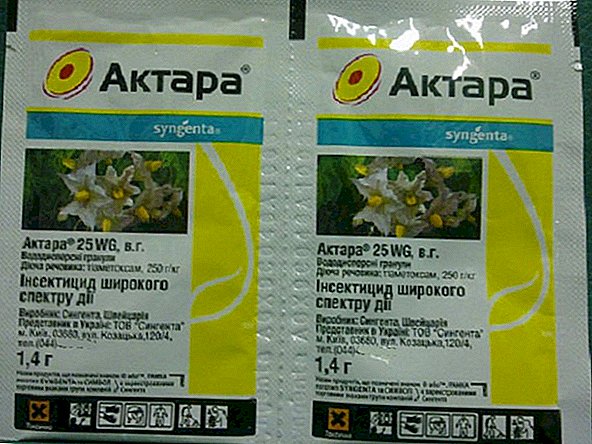
- "MKS" or "Karate Zeon" - 2 times per season, 200-300 liters per hectare.

Important! Two contiguous treatments in time with an interval of no more than 7 days should be observed. The reason for this is that the eggs and individuals of the nymphs are highly resistant to the drugs, or the drug may not immediately reach them.
Onion rattle

 Harmful foci. In the southern strip is able to give two generations, and in the middle bands usually gives one. The onion ratchet can often be confused with the lily; their only difference is that the lily has black legs and a head, and the onion has a red one.
Harmful foci. In the southern strip is able to give two generations, and in the middle bands usually gives one. The onion ratchet can often be confused with the lily; their only difference is that the lily has black legs and a head, and the onion has a red one.
Hurts onions, gnawing through holes, resulting in a breakdown of the leaves. An adult can penetrate inside the tubular sheet.
Description. Bugs completely bright red color, only the tip of the abdomen is black, 6 mm in length. Eggs 1 mm long, orange, smooth. The larva is six-legged, on the sides of the point is black, the very dirty white color. Paws, head and chest shield are black. Around the larva a mass of brown color is formed due to the fact that it covers itself with excrement.
How to process onions from these pests: To combat ratchet, drugs used in integrated phytophage number management systems - Proklaim, Spintor (used according to the instructions) are used. 

Onion Keeper (Weevil)
Description. Bug up to 3 mm. At the end of the head there is a "proboscis", bent down. Antennae clavate, thickened at the end, articulated. The body is black, but because of the white scales appears gray. White stripe along the anterior wing seam. Paws are red-brown.
White eggs, round, small - up to 0.5 mm. The female lays them in April, and after two weeks the larvae appear, which can damage 100% of the onion leaves. In one sheet can be from 7 to 17 larvae. The larvae are yellow, with a brown head, without legs, up to 7 mm. Then, through the leaves, the larva gnaws its way into the bulb, and from it goes out into the ground and begins to pupate. The stage of development of the larva lasts up to one month. Bug winters in clumps of soil and under dried grass. Wakes up in early spring. 
 Hurts initially diseased sprouted bulbs that were not removed from the site, then transferred to new crops. Piercing with its nose leaves of onion and eats pulp. Affected leaves acquire whitish roundish specks, similar to needle pricks. Then the leaves dry out and the plant dies off. Onion crops planted with seeds suffer catastrophically.
Hurts initially diseased sprouted bulbs that were not removed from the site, then transferred to new crops. Piercing with its nose leaves of onion and eats pulp. Affected leaves acquire whitish roundish specks, similar to needle pricks. Then the leaves dry out and the plant dies off. Onion crops planted with seeds suffer catastrophically.
Most effective weevil protection is the regular loosening of the soil in order to break the "earth cradles" of the pupae and wintering of the bug itself.
Stem Nematode

 Extremely dangerous for onions, in very contaminated areas there was a complete destruction of the crop.
Extremely dangerous for onions, in very contaminated areas there was a complete destruction of the crop.
Description. The stem nematode is a filiform small worm, its structure can be discerned with a microscope, up to 1.5 mm long, and 0.04 mm wide. The ends of the body have constrictions, and in the mouth there is an acicular stylet (hollow, rolling into the esophagus), thanks to which it is able to suck the sap from the plants. At the base, the stylet has three bulges that look like a ball. Eggs are not visible to the naked eye, and their dimensions are measured in microns.
May overwinter in the soil, in the onion itself and its seeds. In dried plants, it retains its vitality for up to five years, and, once in a humid environment, it regains its vital activity.
The stem nematode mainly damages onions and garlic, but it can also be found on parsnips, parsley, cucumbers and radishes.
Harm. In the bow falls through the leaves, and through the bulb itself from the bottom. At the age of the larva and in the phase of the adult worm, it feeds on plants. Egg laying also occurs in onion tissues. Damage to the plant as soon as it begins to grow.
Damaged bow in the early phase of growth has a sluggish appearance, and the location of the lesion is more subtle. When infected on the later stages of the growing season, onions can have a healthy appearance, sometimes characterized by the appearance of white spots. But inside it is loose, the scales loosely adhere to each other, a graininess of the structure of fleshy scales appears, in the places of damage more refined and pigmented with white and brown spots. Onions can crack, and the inner scales stick out. Such a plant rots at high humidity, or it quickly dries out - at low. 
Nematode usually affects mid-summer. How to treat onions from pests such as nematode worms is a difficult question, because the fight against the nematode rarely leads to its complete destruction. Drugs that can destroy it, very toxic for the plant itself. The basic principle of the removal of nematodes is prevention:
- not planting plants that are susceptible to invasion of nematodes for several years in a row in the same place;
- during harvesting, carefully select the sowing seed and repeat it in the spring before planting;
- make deep loosening of the soil at the landing site;
- Before planting onions in the ground, make contact poisons in small doses.
The nematode does not tolerate temperatures above 40 ° C, so an effective way to control before planting is soaking a onion-seed in water to 55 ° C for 15-20 minutes. Such a method does not harm the culture, but will destroy the nematode.
Did you know? Fresh onion juice is very nutritious and useful, perhaps for these reasons, it attracts various pests.
Pliers

 Most often, the tick intensively infects onions during storage. Often gets into the bulb from the bottom, but it can also penetrate through damage caused by other pests. It settles between the scales of the bulb, and it gradually begins to rot.
Most often, the tick intensively infects onions during storage. Often gets into the bulb from the bottom, but it can also penetrate through damage caused by other pests. It settles between the scales of the bulb, and it gradually begins to rot.
Description of the pest. Female up to 0.2 mm in length, elongated body, white, has two pairs of legs, which are located in front of the body. Scull without visor, semicircular. On the skin ring grooves: dorsal - up to 87, ventral - up to 76. Larvae of smaller size and with fewer rings. Lay one egg per day, 1 female is able to lay up to 25 eggs. Maturation occurs within three days at temperatures above 10 ° C. In cold conditions they slow down the vital activity, multiply when favorable, and at a temperature above 18 ° C, they are spread to other bulbs.
Signs of habitat in the bow. On the inner scales, yellow or green pigmentation appears. When drying during storage, the pigments are more visible. During the growing season, the leaves turn yellow, curl, look like affected by chlorosis, lagging behind.
Basis struggle is prevention:
- cleaning of the vegetable store from the remnants of previous storage;
- fumigation of the storage facility with sulfur checkers - “FAS” or “Climate” (30 g per 1 m3);
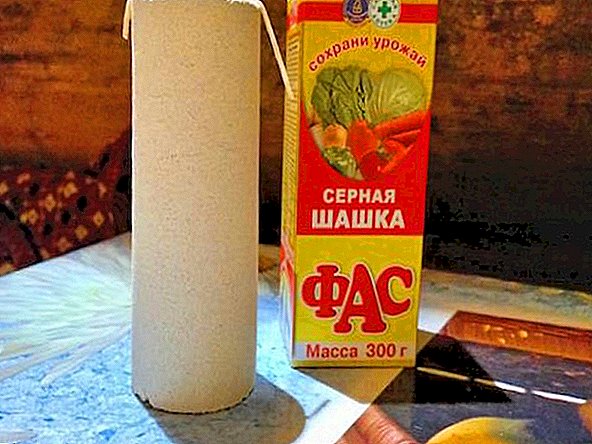
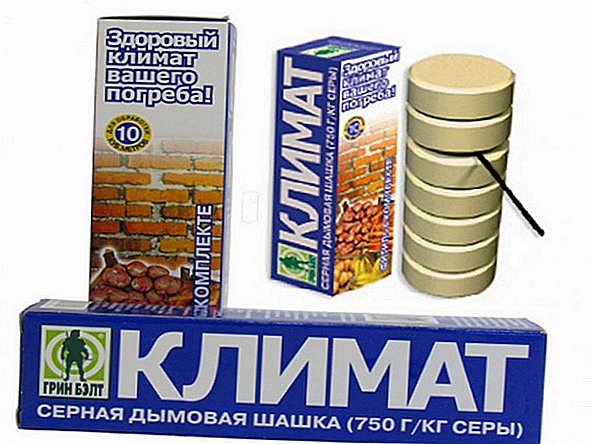
- aeration in a closed room with sulfurous anhydrite for at least 25 days, then airing the storage for two days;
- drying onions before storage;
- during harvesting and processing damaged crops are rejected;
- harvesting in dry weather;
- pruning tops before laying in storage;
- application before the landing of the solution "Aktellika" 0.1%;

- on sevkov sites - processing "BI-58".

Scoops
There are sheet gnawing and gnawing scoops. The first feed on the tops, and the latter are in the ground and gnaw the onion itself. Usually they are active at night, and during the day they are in the immobility phase.
Description. The adult individual is represented by a butterfly up to 5 cm in wingspan. The front wings are brown with transverse white stripes, and the hind wings are light brown in color.
Eggs are dark gray. hemispherical. One butterfly can lay up to 40 eggs. The larva appears after 12 days. Larva: green caterpillar on the sides with yellow stripes, it is gray-green or yellow-green. In warm regions gives two generations. 

Damage. The larvae crawl and gnaw the leaves, capable of biting into the bulb itself. Damaged onion produces an unpleasant smell and rot.
Great damage to the scoop also causes such plants as: tomatoes, corn, tobacco, peas, pumpkin, zucchini, sunflower, beets, potatoes and cabbage.
Wrestling:
- weed control;
- deep loosening of the soil in between the rows;
- to attract adults, tanks are placed with a liquid that has an enticing aroma (jam, beer);
- обработка "Децисом", "Арриво", "Шерпа" по инструкции;


- биопрепараты для борьбы с личинками;
- глубокая перекопка осенью и уничтожение личинок.
Shallot Aphid
Description. Body brown color, egg-shaped body shape. Larvae of dark shades of yellow or green. Eyes brownish black. Developed antennal bumps, converge in front and in size longer than body. Spitz of the sixth segment and 4-5 segments of the black, and the rest of the same color as the body. The tubules are light, cylindrical, tapering towards the apex, ending with a dark funnel. Tubes are 8 times smaller in length.
Signs of damage. Leaves wither, bend, culture lags behind in growth. The leaf feather that goes to the greens is polluted with the feces of aphids and skins, which the larva dumps. Aphid itself is located on the leaves, under the outer shell of onions.
Main protection measures are agrotechnical methods:
- soak in hot water onions before planting;

- “nedogon” stored separately from the main crop;
- weed cleaning;
- infusions of insecticidal cultures (described above).
Important! Onion processing with pesticides per feather is prohibited.
Useful tips on protecting onions
By adhering to some tips, you can prevent the onion from infecting pests.
- Compliance with culture (planting onions at the same place no earlier than after 5 years).
- Sowing in terms of zoned varieties.
- Autumn and spring digging landing area.
- Disinfection with a solution of copper sulphate before planting.
- Extract crop spacing during disembarkation for good ventilation.
- Timely cleaning of weeds.
- Treatment with biological products in the phase of germination and ejection of the pen.
- Inspection and processing of planting material before planting.
- Identification and destruction of infected plants.

















